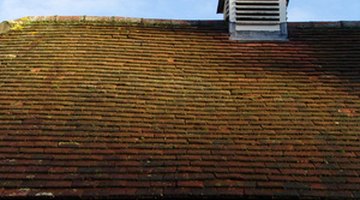Instructions or Plans to Build a Cupola
A cupola is a small structure placed on top of a larger building. Older buildings frequently used cupolas for a variety of purposes–-to help vent stuffy attics, to let in light, or even as observation areas. Many builders use them for ornamentation.

Design
Deciding what sort of cupola you want to build is your first and most important step. You need to ask yourself a few questions: Will your cupola be useful or merely decorative? A cupola can be a classy alternative to a metal roof vent, for example, or if properly-situated can take the place of a sunroof. But it can also serve ornamental purposes, becoming the mounting point for weather vanes or providing an interesting architectural touch to an otherwise plain building.
What shape will it take? While we typically think of cupolas as square structures, historically they have been built in a variety of shapes. Dome-shaped cupolas were very popular in the past, and octagonal shapes were also common.
Will it include vents? While many cupolas include vents, there is no rule that they must. You might choose to use some sort of windows, solid but decorated “walls,” or no walls at all. In the last case, you might decide to mimic a church bell tower or some other open tower structure.
With these ideas in mind, it will be much simpler to find suitable plans. In addition to “pay” plans, you can find many free cupola plans on the Internet. In addition, home improvement magazines sometimes offer sets of plans.
Placement
When you design your cupola, you should also give some consideration to its position on the roof. Since most cupolas sit on the ridge of the roof, you will need to choose a position where you can safely work while installing it. You will also need to determine the angles at which the base of the cupola should be cut, so that it will fit tightly against the roof line. You can do this by laying two straight pieces of wood against the roof, allowing them to overlap each other at the ridge line, and clamping them together to "copy" the angle. You can then use this template to transfer the angle to the base pieces of your cupola.
Assembly
One advantage of using a cupola is its relatively small size. It can be assembled in a shop, in pieces if necessary, where there is no danger of falling from the roof. Mounting hardware can be situated on the roof beforehand, then the pieces can be carried to the roof and mounted with relative ease and safety.
The Drip Cap
- A cupola is a small structure placed on top of a larger building.
- You need to ask yourself a few questions: Will your cupola be useful or merely decorative? While we typically think of cupolas as square structures, historically they have been built in a variety of shapes.
- Since most cupolas sit on the ridge of the roof, you will need to choose a position where you can safely work while installing it.
- You will also need to determine the angles at which the base of the cupola should be cut, so that it will fit tightly against the roof line.
References
Resources
Writer Bio
North Carolina native Mike Southern has been writing since 1979. He is the author of the instructional golf book "Ruthless Putting" and edited a collection of swashbuckling novels. Southern was trained in electronics at Forsyth Technical Community College and is also an occasional woodworker.
Photo Credits
- barn with weathervane image by thomas owen from Fotolia.com
- barn with weathervane image by thomas owen from Fotolia.com
More Articles



